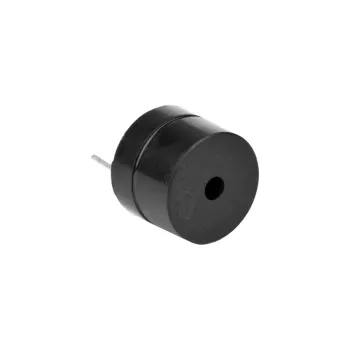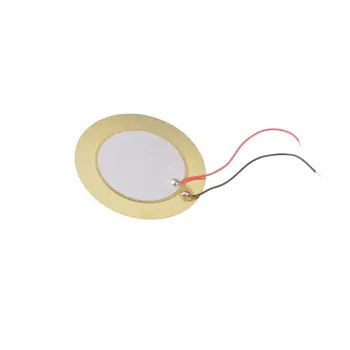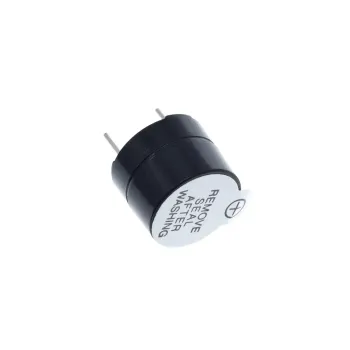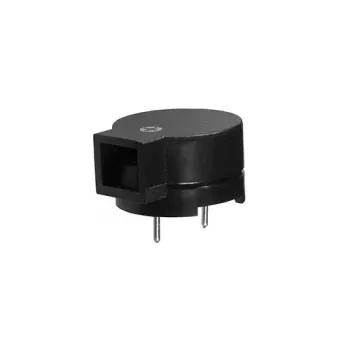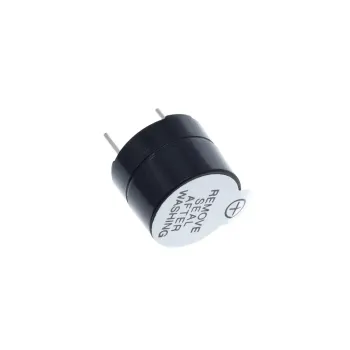
- Stock: In Stock
- Model: BBZ002.PSV12
Overview of the 12V Passive Buzzer (12mm)
The 12V Passive Buzzer is a type of sound-emitting device that necessitates an external signal to generate sound, as it lacks an inbuilt oscillating circuit. It functions by accepting an AC (alternating current) or a PWM (pulse-width modulation) signal from a microcontroller or another external circuit.
Key Characteristics:
- External Oscillator Requirement: Unlike active buzzers with an internal oscillator, passive buzzers need an external oscillating signal to generate sound.
- Operating Voltage: They typically operate at low DC voltages, usually between 3V and 12V.
- Versatile Sound Generation: They can produce a broad spectrum of frequencies and tones, depending on the input signal.
- Flexible Control: By modulating the input signal, they can be controlled to generate various sounds, melodies, and frequencies.
Technical Specifications:
- Dimensions: They are available in a variety of sizes, often similar to active buzzers, such as 12mm or 9mm in diameter.
- Sound Level: They typically produce sound levels ranging from 70 to 85 dB, although this can vary based on the input signal.
- Frequency Range: They can generate a wide range of frequencies, typically between 1kHz and 5kHz, depending on the input.
- Current Consumption: They usually have low current consumption, around 10-30 mA, but this can vary based on the input signal characteristics.

Applications:
- Electronic Projects: They are extensively used in Arduino and other microcontroller projects where specific tones or melodies are required.
- Alarm Systems: They are used in security and alarm systems to produce various alert sounds.
- Home Appliances: They are used in appliances like washing machines, microwaves, and other devices to provide alert or status sounds.
- Toys and Games: They are incorporated into toys and electronic games to produce sound effects and music.
Advantages:
- Sound Customization: By varying the input signal, they can produce a wide range of sounds and tones, allowing for more complex sound generation.
- Cost-Effective: They are generally inexpensive and widely available.
- Flexible Integration: They can be easily controlled by microcontrollers and other digital circuits to produce specific sound patterns.
Disadvantages:
- Requires External Circuitry: They need an external oscillating signal, which can make the circuit design more complex compared to using an active buzzer.
- Dependent on Input Signal: The sound quality and volume can vary significantly based on the characteristics of the input signal.
Example Connection:
To use a passive buzzer with a microcontroller like an Arduino, follow these steps:
- Connect the Positive Terminal: Connect the positive terminal of the passive buzzer to a PWM-capable digital pin on the microcontroller.
- Connect the Negative Terminal: Connect the negative terminal to the ground (GND) of the microcontroller.
- Generate Signal: Use the microcontroller to generate a PWM signal or oscillating signal to drive the buzzer.
Example Arduino Code:
int buzzerPin = 9; // PWM-capable pinvoid setup() { pinMode(buzzerPin, OUTPUT);}void loop() { tone(buzzerPin, 1000); // Generate 1kHz tone delay(1000); // Wait for 1 second noTone(buzzerPin); // Stop the tone delay(1000); // Wait for 1 second}
This simple code generates a 1kHz tone for 1 second, followed by a 1-second silence, repeating indefinitely.


